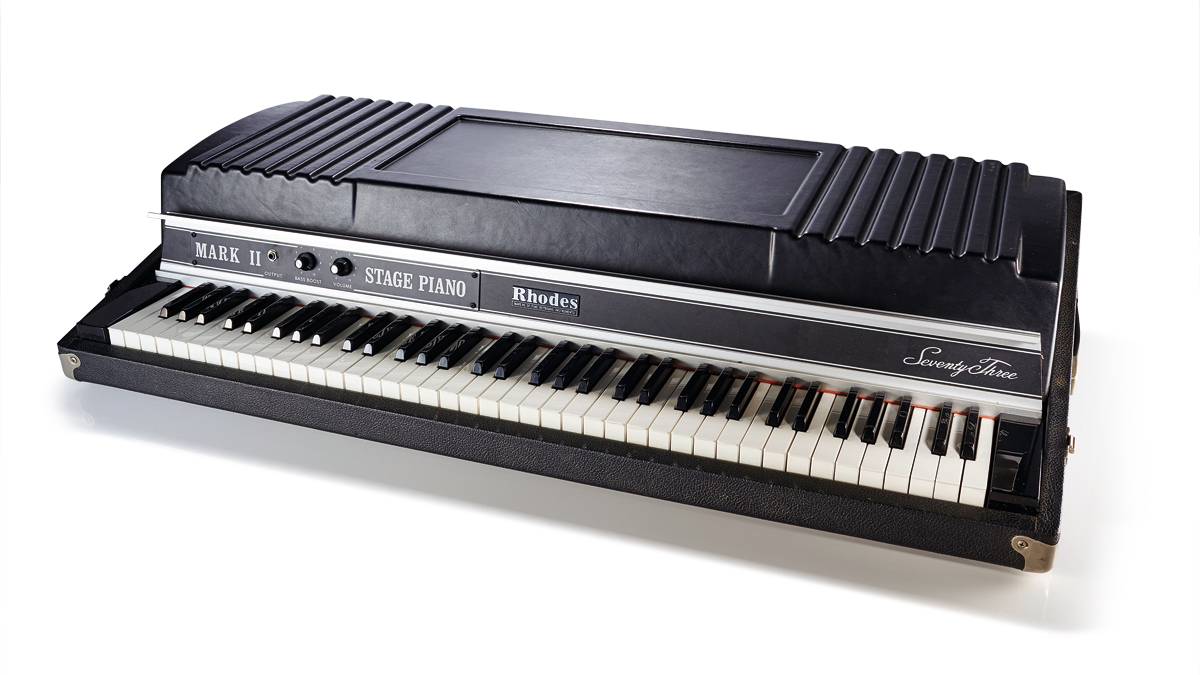The beginner's guide to: broken beat
This west London sound broke free from four-to-the-floor rigidity, creating an underground genre that lives on

Maybe you’ve never heard of the broken beat scene that emerged out of west London in the late ’90s, but you’ve probably heard its influence.
Also known as ‘bruk’ (from Jamaican patois for broke/broken), the broken beat scene never really crossed over to commercial chart success or created any household names, but the influence of its choppy grooves, jazz influences and open-minded approach lives on today.
The term ‘broken beat’ was coined by IG Culture, London-born Ian Grant, who first found success as a member of Dodge City Productions, a hip-hop duo who straddled the worlds of rap music and acid jazz, the late ’80s sub-genre, which acted as the groove-focussed, club-centric offshoot of UK jazz culture.
From the mid-’90s, alongside fellow DJs and producers including the likes of Alex Phountzi, Kaidi Tatham and Dego of 4hero, Grant began exploring a sound which combined a range of influences, loosely defined by a jazz aesthetic and heavily syncopated, chopped (‘broken’) drum patterns.
Looking back on the heyday of bruk in 2017, IG Culture cited the importance of jazz in defining the sound of the music, but also pointed out the “London heritage” of jungle, rare groove, dancehall, reggae, imported US hip-hop and house. It’s a range of influences that’s not only typically London but also reflects the crucial impact of black music and black artists on UK club culture.
Never limited to any particular equipment or instrumentation, broken beat’s production approach was largely defined by the era, notably the fact that DAWs were still relatively primitive in the late ’90s. As such, hardware samplers (Akai MPCs and E-mu rack samplers beloved by jungle producers) were crucial, but so were analogue synths and Fender Rhodes electric pianos, live instruments and just about anything else.
This was absolutely not a genre defined by instruments in the way something like acid house was defined by the Roland TB-303; in broken beat, the equipment was as eclectic as the musical influences.
Get the MusicRadar Newsletter
Want all the hottest music and gear news, reviews, deals, features and more, direct to your inbox? Sign up here.
CoOp nights
The physical hub around which the broken beat scene revolved was CoOp, a club night started by IG Culture, Dego, Demus and Phil Asher, initially at the Velvet Rooms before moving to the iconic Plastic People in Shoreditch.
Like so many genres, the golden age of broken beat was relatively short-lived, although that’s not to say that it necessarily petered out so much as the artists and DJs involved simply continued exploring different creative ideas. CoOp drew to a conclusion in 2007, returning in 2017 for occasional events around various London venues.
One of the defining features of broken beat is the way that it fits into a much longer and broader narrative of musical culture, stretching back through other genres and continuing forward to this day. You can place a genre tag on it, by all means - and most of the people involved were happy to accept the broken beat classification at the time - but there’s a sense that it was a musical style that simply represented a moment in time, part of something much bigger.
Today, you’ll find the subtle influence of broken beat clearly in a lot of UK music, whether consciously or not. Many of the names involved in the late ’90s are still active to this day, including IG under his new Likwid Continual Space Motion alias and Dego, whose 2000 Black label proudly describes itself as ‘genre- defying music’ but frequently overlaps with the broken beat sound and ethos. You’ll also hear the DNA of broken beat continuing to evolve via a newer generation of labels like 22a, Alexander Nut’s Eglo and Bradley Zero’s Rhythm Section.
Three broken beat essentials
FabricLive 12 – Bugz In The Attic, 2003
Broken beat was never really an album genre, with the focus much more on club-friendly tracks rather than full-length releases.
If you’re looking for a bigger fix, a good starting point is the 12th instalment of London superclub Fabric’s open-minded mix series, FabricLive. Broken beat supergroup Bugz In The Attic highlight the eclecticism of the scene, moving from subtle jazzy territory to heavier sounds and even taking in the dark proto-dubstep garage of Artwork’s Red.
Cousin Cockroach – This Ain’t Tom N’ Jerry, 2002
An alias of Dennis McFarlane, best known as Dego, founder member of hugely influential London group 4hero, this 2002 release was a CoOp favourite at the time but reached a bigger audience thanks to a 2014 rerelease on Berceuse Heroique.
A swaggering 125bpm classic with vicious sub-bass, laser zaps and a wildly skittering rhythm, This Ain’t Tom N’ Jerry showcases the darker end of the broken beat sound.
Kaidi Tatham & Dego – Got Me Puzzled, 2003
Yet another Dego production, with Kaidi Tatham - a hugely prolific multi-instrumentalist whose mark is all over broken beat - taking centre stage with a sublime jazz-funk keyboard performance over a shuffling, lolloping beat.
Five minutes of dancefloor heat that showcases the delicate touch of the genre’s finest moments.
Future Music is the number one magazine for today's producers. Packed with technique and technology we'll help you make great new music. All-access artist interviews, in-depth gear reviews, essential production tutorials and much more. Every marvellous monthly edition features reliable reviews of the latest and greatest hardware and software technology and techniques, unparalleled advice, in-depth interviews, sensational free samples and so much more to improve the experience and outcome of your music-making.
"A classic compressor for free on Valentine's Day – it must be love!": Universal Audio is giving away an 1176 plugin as a Valentine's gift - here's how to get it and use it
“A magical part is this sidechain with the bass”: Lady Gaga breaks down Disease in new studio video










